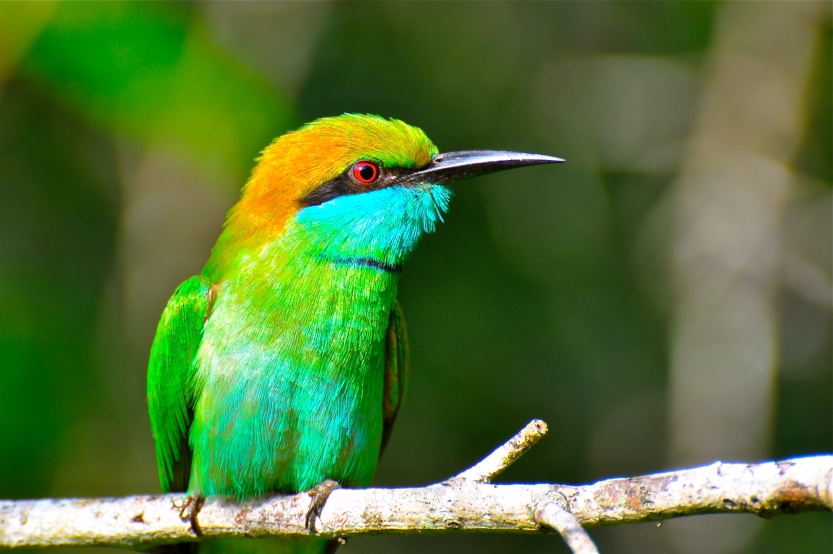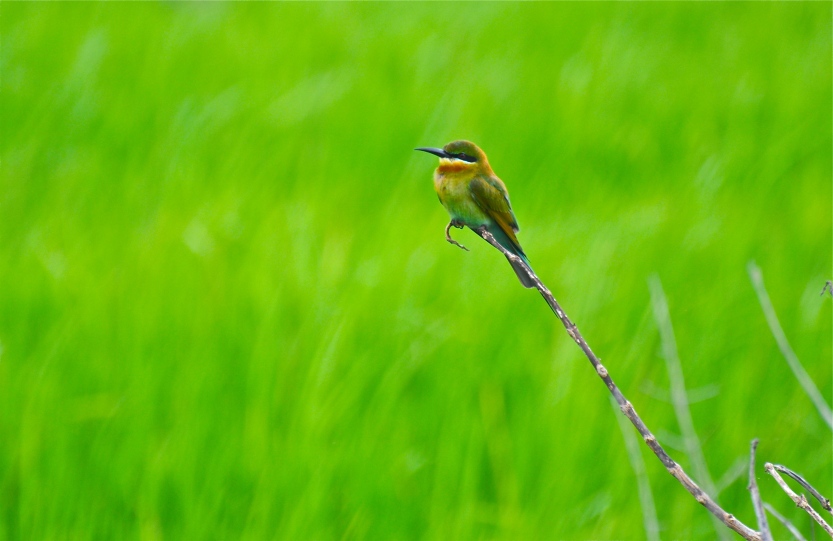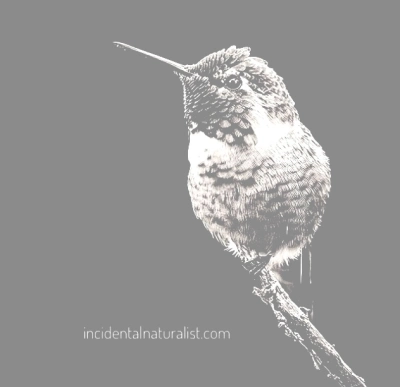The emerald isle of Sri Lanka is a dream destination for lovers of nature. The vast national parks, where wild Asian Elephants still roam, present some of the world’s best opportunities for viewing wild leopards in their natural habitat. Crocodiles bask on lake shores and bird life is abundant. Not to mention the spectacular marine life around the coast.
During a 9 day trip starting in the capital Colombo, I checked-off many species of birds, mammals and reptiles, from the cool, lush green highland tea plantations of Ella to the baked southern grasslands of Yala. One family of birds was ever-present throughout the trip – the bee-eaters.

As a child, watching TV nature documentaries, the bee-eater family is one of a handful of species, along with species such as kingfishers that my mother would swoon over. The European species is known to visit Britain and so is afforded a section in most British bird field guides. In truth, their visits are infrequent and small in numbers, meaning there was little chance of us seeing one. I have though, been fortunate to see them in many different countries whilst on my travels, but usually in pairs on a high telephone cable, tree top or feeding on insects high up in the sky above.
This is where Sri Lanka is different. The Little Green bee-eaters were often found on low perches, as they skimmed across the grasslands and rice paddies. The sound of their twittering was a constant back-drop on a sunny morning and it was also possible to get quite close, especially if you are in a jeep. All of these photos were taken in or around Yala National Park and always with a 70mm-300mm zoom lens.

There are four species of bee-eater in Sri Lanka:
- Little Green bee-eater
- Blue-tailed bee-eater
- European bee-eater
- Chestnut-headed bee-eater
I was fortunate enough to have seen them all during my short trip to the island. This post shows photographs of two of these species. By far the most common and most accommodating to the amateur photographer, was the Little Green.

For me, bee-eaters fit nicely into the group of birds that could be classified (perhaps not scientifically) as ‘Outrageously Colourful’ along with parrots, hummingbirds, kingfishers and a few other species. They are a joy to behold, for bird enthusiasts and casual observers alike, we wonder how it is possible for a bird to be created with such dazzling colour.
These magnificent birds, in shimmering shades of green and blue grow up to 18 cm (9 inches), which includes an elongated tail ‘spike’ of around 5 cm (2 inches). The Sri Lankan sub-species have a pale blue throat. The bright ruby eye seems like an extravagant adornment to a bird, already resplendent with colour.

As may be expected from the name, as well as being little and green, these birds feed predominantly on bees, wasps and ants. They capture their prey on the wing, in aerobatic manoeuvres before deftly removing the sting and tenderizing the body with a series of bashes on a suitable post. The insect is then swallowed and any hard parts are regurgitated in pellet form.

This beautiful and once seemingly inaccessible bird is one of several species that led me to create Incidental Naturalist. There has never been an occasion where I have set out to look specifically for bee-eaters, and yet I have seen them in so many countries, incidental to holidays or business trip, in towns and countryside.
If you enjoyed this post, please follow Incidental Naturalist.
Comments and shares are welcomed.
Categories: Asia





I love bee-eaters. I see every year European bee-eater in South of France. It’s always a show.
I haven’t ever seen Blue-tailed bee-eater and Chestnut-headed bee-eater, two more reasons to go to Sri Lanka.
Thank you for sharing.
LikeLiked by 2 people
Gorgeous!
Since you mentioned kingfishers, I watched one fishing a while ago outside my studio window.
Keep up the great work!
LikeLiked by 3 people
Well now I’m curious if there is a problem with low bee populations where these exist…
LikeLiked by 1 person
pretty good!
LikeLiked by 1 person
Brilliant photos, David! They are gorgeous birds. As you probably know we only have one species of bee eater in Australia – rainbow bee-eater (Merops ornatus). Sometimes I see a solitary one in my back yard here but when I lived on a farm in Queensland I would see dozens off them catching bees that came to drink from the dam waters. Truly a special sight.
LikeLike
Thanks Jane! Very kind of you and very encouraging, again! I was also fortunate to see the bee-eaters in Australia. I couldn’t get as close to them; they were a little more shy and often sat on high wires or branches. Isn’t it great to watch them catching insects over the water.
LikeLiked by 1 person
Amazing photos! Made my heart go pitter patter
LikeLike
Great feedback, thanks! That makes me smile!
LikeLike
beautiful!!
LikeLiked by 2 people
Stunning pictures! I love Sri Lanka.
LikeLiked by 2 people
Nice pictures! I got a few mammals on a trail last week until a cyclist road by and scared one. Sweet birds here.
LikeLiked by 2 people
Look at those colours!! Amazing! Did you enjoy Sri Lanka? Was the food very spicy? Great photos by the way 🙂
LikeLiked by 2 people
Thanks for the feedback! We loved Sri Lanka. It was a real surprise. One of those places that considerably exceeds expectations. Some of the food was spicy but I would describe it as fragrant and bursting with flavour.
LikeLiked by 1 person
Sounds fantastic 🙂
LikeLiked by 1 person
Sri Lanka has some much that is precious. Lovely to see the small and the fleeting get such great coverage.
LikeLiked by 2 people
Reblogged this on tanguiss.
LikeLiked by 1 person
Dazzling beauties indeed! What a feast for the eyes n heart…glad I’ve chanced upon your blog! Have seen the bee eaters, but never got to see them close.
LikeLiked by 2 people
Stunning little bee-eaters!!!
LikeLiked by 2 people
Glad to know there are bee eaters of different kinds and alive and well. European one visits us in Southern Spain but numbers do seem down this year.
LikeLiked by 2 people
Nice photos and some interesting facts about bee eaters! Wanna see one of them, too!
LikeLiked by 2 people
Beautiful photos! They are, indeed, “outrageously colorful.”
LikeLiked by 1 person
Dazzling indeed. I was amazed by the vibrance of the green, not only in the birds’ feathers, but also in the glimpses of landscape behind them. That grass! Do you happen to know if the birds you photographed were male or female? We have some beautiful birds in the Smoky Mountains, my home sweet home, but the females are mostly dull colors while the males are flashy.
Thanks so much for letting us see the world through your lens!
LikeLiked by 1 person
Thanks for the comment! I love the green of the bird against the grass. The sexes are very similar. One might be a female but I think they are mostly males. The Smokey Mountains must be a wonderful place to live!
LikeLike
Very nice !
LikeLiked by 1 person
I loved the one bee-eater species I saw in Australia. Seeing these 4 gorgeous ones in Sri-Lanka sounds (and looks) amazing!
LikeLiked by 1 person
It certainly was amazing! So much wildlife, often close up and I found it reasonably priced (cheap in fact), safe and delicious!
LikeLike
Nice… I have found a little bee eater in my yard.it was hurt by something and also it couldn’t fly so how can I help to it I don’t know what to do!
Please tell me solution
LikeLike
Thanks! If you can, put it in a dark box with plenty of air and let it rest. if it still can’t fly after an hour you should look for a local wildlife care facility.
LikeLike